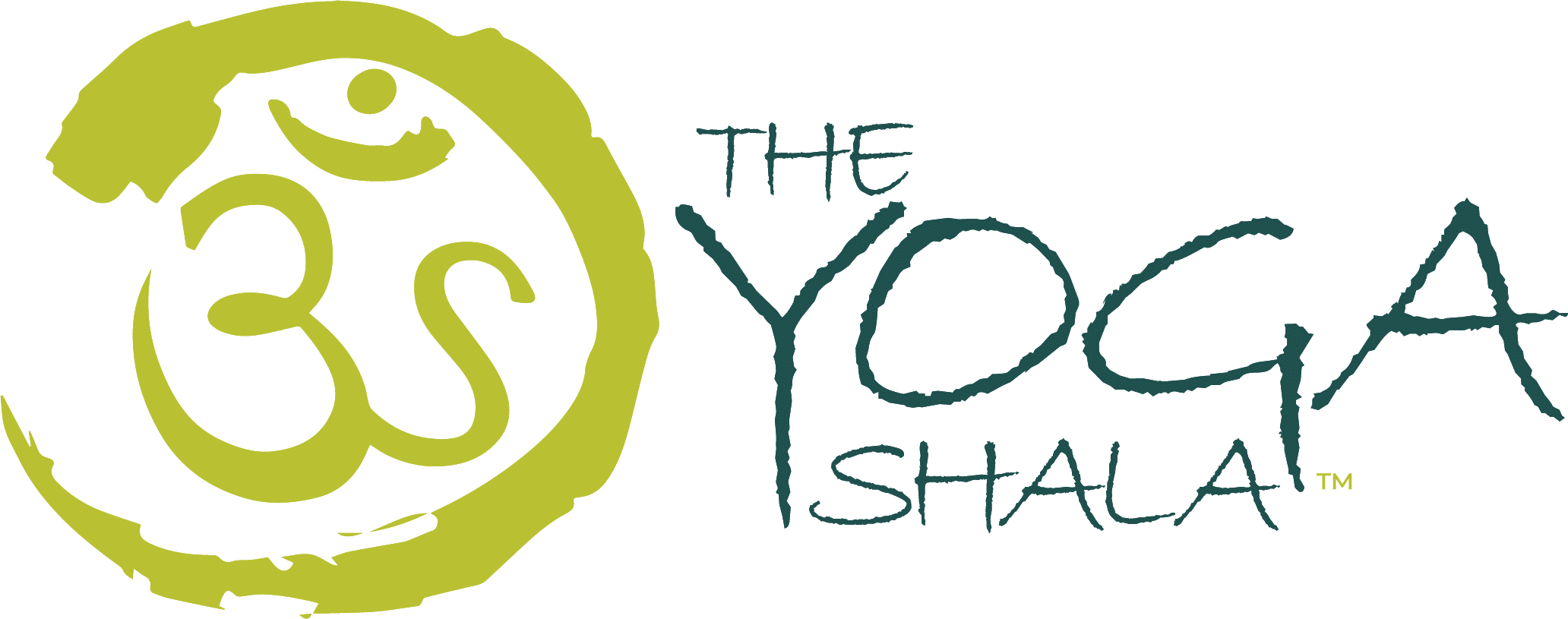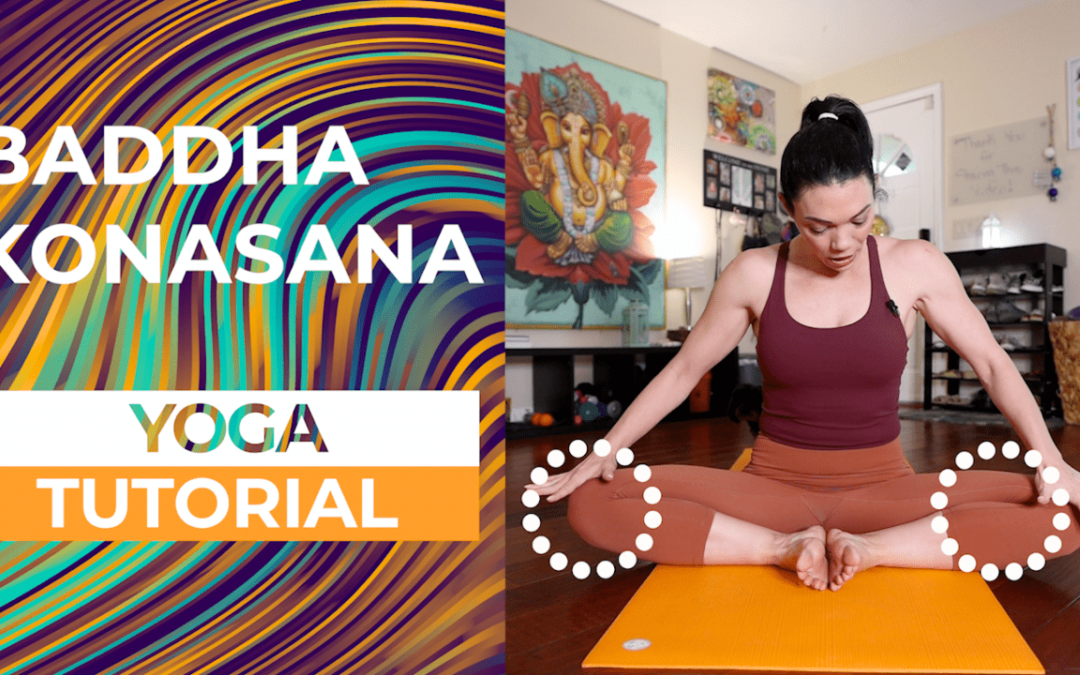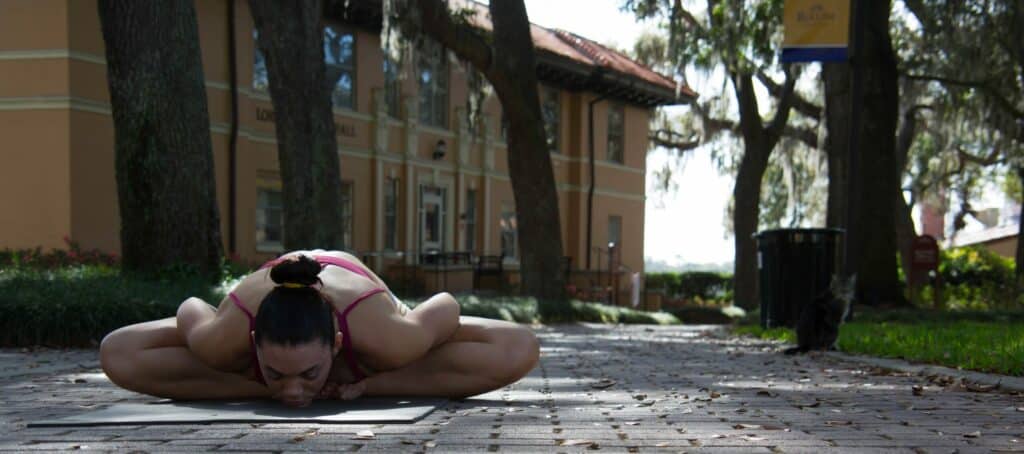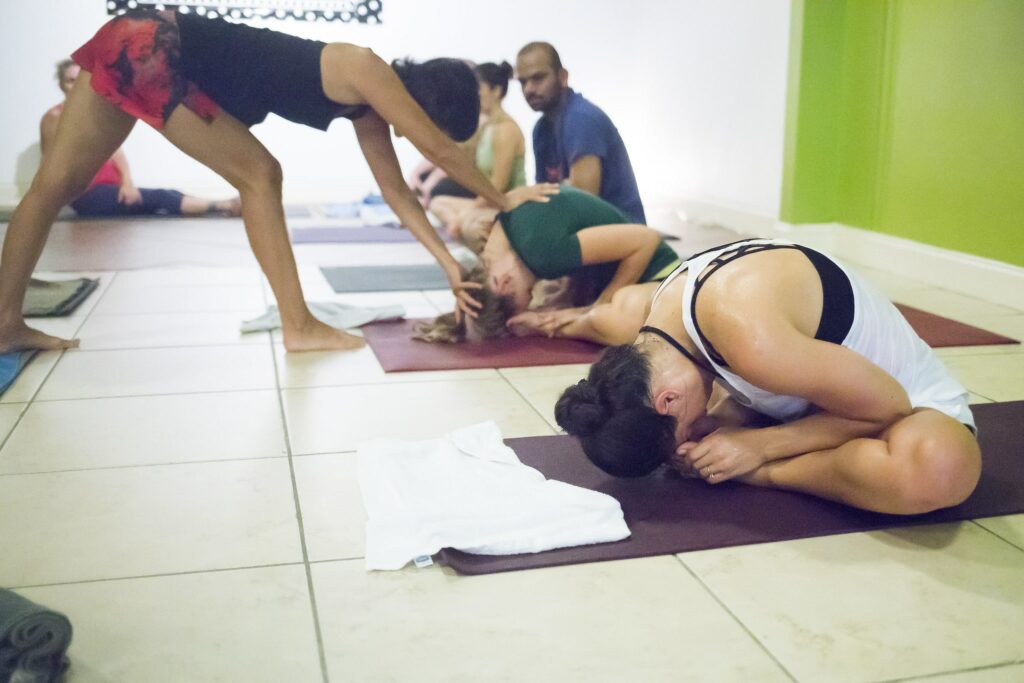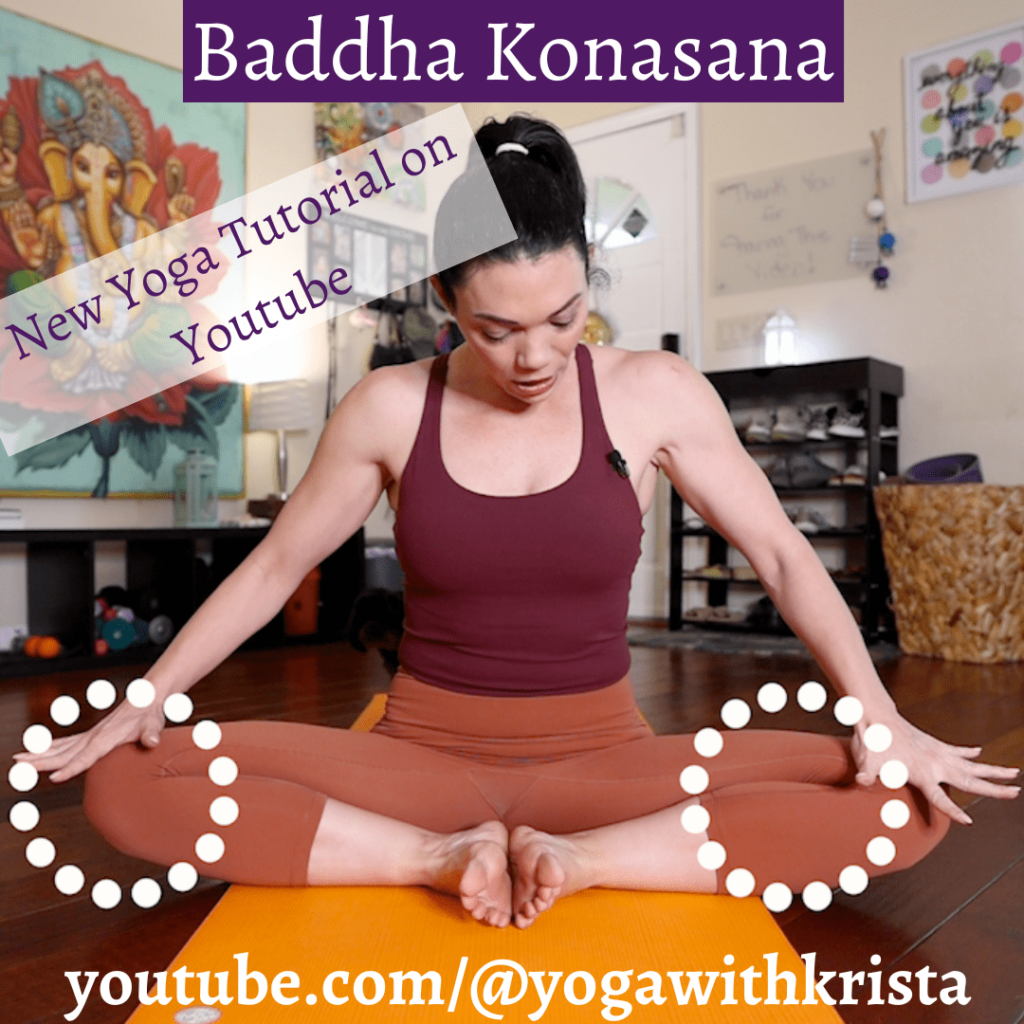Yoga is a journey of self-discovery, offering a path to physical, mental, and spiritual wellness. Among the treasures of the Ashtanga Yoga Primary Series seated sequence, the Baddha Konasana, or Bound Angle Pose, stands out as a gem that embodies both the grace of movement and the depth of inner reflection. In this blog post, we’ll explore the nuances of Baddha Konasana, understanding its physical benefits, step by step instructions for taking this asana, and its significance within the context of the Ashtanga Yoga tradition.
Baddha Konasana derives its name from Sanskrit words: “Baddha” means bound, “Kona” means angle, and “Asana” signifies posture. This seated asana involves bringing the feet together, forming a diamond shape with the legs, while the hands hold the feet in place. The pose resembles the flapping of butterfly wings, hence the alternative name “Seated Butterfly Pose.”
Significance in Ashtanga Yoga
Baddha Konasana is woven into the fabric of the Ashtanga Yoga tradition as part of the Primary Series seated sequence. This sequence is designed to prepare the body for deeper poses, focusing on foundational postures to establish flexibility, strength, and mindfulness. Baddha Konasana offers practitioners a moment of introspection and grounding before moving into the final postures of the Primary series.
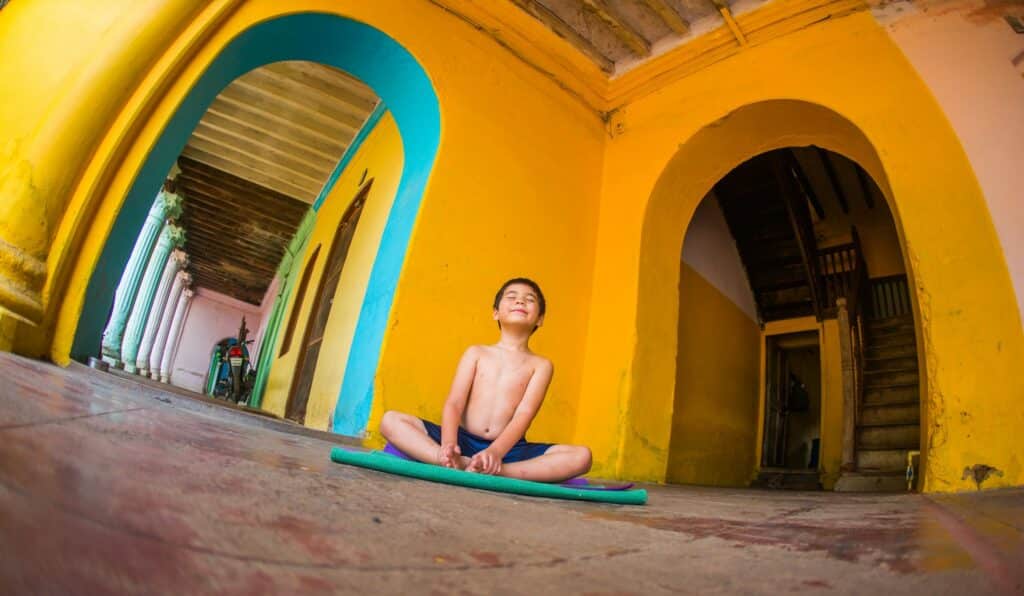
Click here to watch the YouTube tutorial for Baddha Konasana
Benefits of Baddha Konasana
Baddha Konasana, also known as Bound Angle Pose or Butterfly Pose, offers a variety of physical, mental, and energetic benefits. Here are some of the key advantages of practicing this pose regularly:
Hip and Groin Flexibility:
Baddha Konasana is a superb hip-opener, providing a deep stretch to the inner thighs, groins, and hips. Regular practice can help improve flexibility in these areas, making it easier to move into more advanced hip-opening poses.
Stimulates Abdominal Organs:
The posture creates a gentle pressure on the abdominal organs, including the kidneys, bladder, and ovaries. This can help improve blood circulation in the pelvic region and stimulate the digestive and reproductive systems.
Relieves Lower Back Tension:
By encouraging a proper alignment of the pelvis, Baddha Konasana can help relieve tension in the lower back. The pose also promotes a healthy posture, which is essential for overall spinal health.
Enhances Circulation:
The gentle flapping motion of the legs in this pose can stimulate blood circulation in the lower body, aiding in the prevention of stagnation and promoting overall cardiovascular health.
Calming and Relaxing:
Baddha Konasana has a calming effect on the nervous system. The focus on the breath, combined with the gentle opening of the hips, can help reduce stress and anxiety, leading to a sense of relaxation and tranquility.
Prepares for Childbirth:
This pose can be particularly beneficial for pregnant women as it helps to open the hips and pelvis, potentially easing discomfort during pregnancy and facilitating a smoother childbirth process.
Energetic Balance:
In yoga philosophy, the hips are considered a storage area for emotions and energy. Opening the hips through Baddha Konasana can help release any stored tension or emotions, promoting a sense of emotional balance and well-being.
Grounding and Introspection:
Baddha Konasana encourages introspection and mindfulness. As you settle into the pose and focus on your breath, you can experience a sense of grounding and connection to the present moment.
Preparation for Meditation:
The stillness of Baddha Konasana makes it an excellent preparation for meditation. The pose cultivates a sense of inner stillness and tranquility, making it easier to enter a meditative state afterward.
Pelvic Floor Awareness:
The pose involves engaging the pelvic floor muscles, which are essential for overall core strength and stability. Practicing Baddha Konasana can help you become more aware of these muscles and how to engage them effectively.
Click here to watch the YouTube tutorial for Baddha Konasana
Contraindications for Baddha Konasana
While Baddha Konasana (Bound Angle Pose) offers many benefits, there are certain contraindications and precautions that should be taken into consideration, especially if you have specific health conditions or limitations. It’s important to practice yoga poses mindfully and consult a healthcare professional or a qualified yoga instructor if you’re unsure whether a pose is suitable for you. Here are some contraindications for Baddha Konasana:
Recent Hip or Knee Injury:
If you have recently injured your hips, knees, or groin, it’s advisable to avoid Baddha Konasana or practice it with extreme caution. The pose can place stress on these areas and potentially exacerbate your injury.
Sciatica:
Individuals with sciatica or nerve-related discomfort in the hips and legs should be cautious when practicing Baddha Konasana. The pose may aggravate the condition, leading to increased pain or discomfort.
Menstruation:
While some women find hip-opening poses beneficial during their menstrual cycle, others may experience discomfort or strain in the pelvic area. Listen to your body and modify or skip Baddha Konasana if it doesn’t feel appropriate during this time.
Groin or Hamstring Injury:
If you have a groin or hamstring injury, practicing Baddha Konasana might strain these areas and delay the healing process. Modify the pose or skip it altogether to avoid further injury.
Sacroiliac Joint Issues:
Individuals with sacroiliac joint dysfunction or instability should be cautious with hip-opening poses, including Baddha Konasana. The pose could potentially exacerbate the condition or cause discomfort.
Osteoarthritis:
If you have osteoarthritis in the hips, knees, or spine, it’s essential to approach Baddha Konasana with caution. Consult your healthcare provider or a knowledgeable yoga instructor before attempting the pose.
Hip Replacements:
If you’ve undergone hip replacement surgery, consult your surgeon or medical professional before practicing Baddha Konasana. The pose might not be suitable for everyone with hip replacements, as it could put stress on the new joint.
Pregnancy:
While Baddha Konasana can be beneficial during pregnancy for some women, those in the later stages of pregnancy might find it uncomfortable due to pressure on the abdomen. Always practice under the guidance of a qualified prenatal yoga instructor if you’re pregnant.
Inflexibility:
Individuals with very tight hips might find Baddha Konasana uncomfortable or inaccessible. It’s important not to force the knees down, as this could strain the hip joints or knees.
Discomfort:
If you experience pain or discomfort while attempting Baddha Konasana, it’s essential to stop the pose and assess whether it’s suitable for your body at that moment.
Remember that everyone’s body is different, and what might be contraindicated for one person may be completely fine for another. It’s crucial to listen to your body, practice with awareness, and seek guidance from a qualified yoga instructor or healthcare professional if you have any concerns about practicing Baddha Konasana or any other yoga pose. Your safety and well-being should always be your top priority.
Step-by-Step Instructions for the Full Expression of Baddha Konasana with Sanskrit Vinyasa Count
We will be entering this posture from downward facing dog, having just taken a vinyasa after Kukkutasana to seated position.
Sapta (Vinyasa #7): From Adho Mukha Svanasana (down dog), Inhale, look forward and walk or jump your feet through and have a seat on the floor. Inhale as you draw your feet towards you, knees dropping down and out to the sides. Grab your feet with your hands and spread your feet open, while pressing the sides of the feet together.
Asthau (Vinyasa #8) Exhale, and fold forward out over your legs. Keep your chest forward, head up, and reach your chin towards the floor. Take five deep breaths here. Gently press your arms onto your legs to open your hips more. Eventually you can get deep enough for your stomach to touch your heels and your chin to rest on the floor in front of you. Gaze down the tip of your nose (Nasagrai Drishti).
Nava (Vinyasa #9) Inhale, lift your torso back up with a straight spine.
Dasa (Vinyasa #10) Exhale, begin rounding your back as you fold forward again. Work to bring your forehead to your toes. Take five deep breaths here. Gaze to your nose (Nasagrai Drishti).
Ekadasa (Vinyasa #11) Inhale, lift your torso back up with a straight spine. Exhale there.
Dvadasa (Vinyasa #12) Inhale, bring your hands to the floor, cross your legs and lift your body up off the ground.
Trayodasa (Vinyasa #13) Exhale and jump back into Chaturanga Dandasana.
Caturdasa (Vinyasa #14) Inhale into Urdhva Mukha Svanasana(Upward facing dog)
Pancadasa (Vinyasa #15) Exhale into Adho Mukha Svanasana (Downward facing dog)
Tap above or click here to watch the YouTube tutorial for Baddha Konasana
Alignment and Cautions
While Baddha Konasana seems simple, proper alignment is crucial to reap its benefits and avoid strain:
Sit Tall:
Lengthen your spine, imagining a string pulling the crown of your head towards the ceiling.
Engage Core Muscles:
Gently engage your core muscles to support your lower back and protect it from strain.
Knee Awareness:
Allow your knees to drop outward, but avoid forcing them down. Listen to your body and work within your range of motion to prevent unnecessary strain on the knees.
Modify for Comfort:
If your hips are tight, you can modify the posture.
Modifications for Baddha Konasana
Modifications can make yoga poses like Baddha Konasana (Bound Angle Pose) more accessible and comfortable, especially if you’re a beginner, have physical limitations, or need to adapt the pose to your body’s needs. Here are some modifications you can consider for Baddha Konasana:
Widen the Angle:
If bringing the feet close to the pelvis causes discomfort or strain, start with a wider angle between your feet. Gradually work on bringing the feet closer over time as your flexibility improves.
Leaning Forward:
Instead of folding the upper body over the legs, try a gentle forward lean, supporting your torso with your hands on the floor. This can help reduce strain on the hips and groin.
Remember, modifications are meant to enhance your yoga practice and make poses accessible. It’s important to listen to your body and choose the modifications that suit your individual needs and limitations. Gradually, as your flexibility and comfort increase, you might find that you can explore the full expression of Baddha Konasana. Be sure to check out our YouTube tutorial for Baddha Konasana. We break down the full expression of this asana and offer several modifications to help you work with this pose where you are.
Always prioritize safety and alignment to ensure a fulfilling and injury-free practice. If you’re uncertain about which modifications to use, consider seeking guidance from a knowledgeable yoga instructor.
Practice with The Yoga Shala
If you want to join us for LIVE classes, The Yoga Shala offers virtual and in person classes every weekday morning. We are located at 140 Circle Drive, #4, Maitland, Florida. Owner, Krista Shirley, also offers virtual or in person private sessions (Yoga, Meditation, Breath-work, Nutrition, Life Coaching and Mentorship). Visit theyogashala.com for details.
Be sure to signup for our newsletter to stay on top of local events and classes, Nysa products sales, new offerings, new products and more!
We hope you find this video series helpful to you in creating or maintaining your yoga practice!
About Krista
Krista Shirley is a level II authorized Ashtanga Yoga teacher. She is deeply passionate about sharing these teachings with all who wish to learn.
If you want to join Krista in person she teaches daily classes at The Yoga Shala in Maitland, Florida. She also offers virtual sessions in Yoga, Meditation, Breath-work, Nutrition, Life Coaching and Mentorship. Check out www.theyogashala.com for more details.
If you do not live in Central Florida and want to find an authorized teacher in your area, check out our teacher, Sharath Jois’ website, for a list of all teachers authorized and certified by his yoga centre in India.
|
|
|
|
|
|
|
|
|
|
|
|
❤️SHOP MERCHANDISE: Nysa Products
❤️LET’S BE SOCIAL:
Instagram: Krista Shirley Yoga
Instagram: The Yoga Shala
Facebook: The Yoga Shala
Facebook: KristaShirleyYoga
For other inquires please contact: [email protected]
